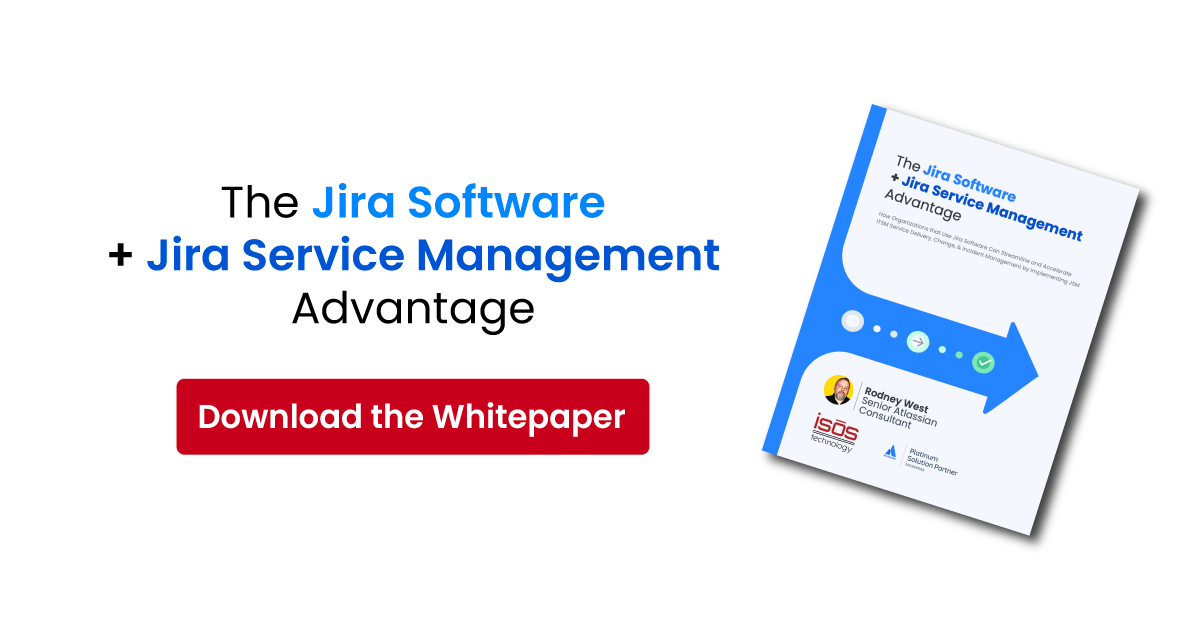 When we say Atlassian has packed a ton of functionality into Jira Service Management (JSM), we mean a TON of functionality. It’s so much more than just an ITSM solution–it also features fully-fledged incident, problem, change, asset, and knowledge management capabilities. Atlassian has purposefully designed JSM practices to work together, in an integrated way and create end-to-end visibility for both agents and customers. Along the way, they’ve not only built out new functionality, but they’ve also acquired a few solutions and embedded natively.
When we say Atlassian has packed a ton of functionality into Jira Service Management (JSM), we mean a TON of functionality. It’s so much more than just an ITSM solution–it also features fully-fledged incident, problem, change, asset, and knowledge management capabilities. Atlassian has purposefully designed JSM practices to work together, in an integrated way and create end-to-end visibility for both agents and customers. Along the way, they’ve not only built out new functionality, but they’ve also acquired a few solutions and embedded natively.
It’s a lot to keep up with–even we have a hard time–and you may be missing out on some great functionality. In this blog post, we’ll look at JSM practice by practice, and bring you up to speed on some important features.
Request Management
IT service request management is at the core of JSM, and it’s usually the main reason companies choose it. What you might not know is that JSM is powerful and flexible enough to meet the needs of virtually any type of service desk. We’ve set up service portals for facilities, human resources, legal, marketing…the list goes on.
Two request management features you should know about are:
- Dynamic Forms (formerly ProForma) - A while back, Atlassian acquired ThinkTilt, the makers of ProForma, and integrated its low-code/no-code form building capabilities into JSM as a native part of the solution. It’s one of the things that makes it so flexible for all types of service desks.
- Atlassian Assist (formerly Halp) - Atlassian also acquired Halp some time ago, and they’ve integrated its conversational ticketing functionality into JSM natively, as well. What’s so cool about it is that you can use it to turn Slack and Team messages into JSM tickets, and you can even automate responses.
Incident Management
If an incident occurs, no matter how big or small, the IT service desk is often the first to know about it. Atlassian has designed JSM to serve as command central for incident management. It’s where both the team working to resolve the incident and users can go for all the latest updates and information.
Two incident management features you should know about are:
- Opsgenie - Most companies use a bunch of different monitoring tools to keep an eye on their systems, which means they also get a ton of automated updates and alerts. These can be centralized and prioritized in Opsgenie and automatically send important alerts to the right people, including notifying your on-call team. It also has video conferencing capabilities, so you can set up a dedicated chat room where everyone working on the incident can connect.
- StatusPage - StatusPage is the communications piece of your incident management process. When an incident occurs, you can display a status update on your JSM portal homepage, so people who go there to submit a ticket can see that you already know about it and can get the latest information. You can also use it to send updates to different groups of stakeholders, both internal and external, about progress on it.
Change Management
Atlassian has built comprehensive change management functionality into JSM that is designed to speed service delivery while minimizing risk. It integrates with Bitbucket and other popular CI/CD tools, so developers can create a change request in JSM from directly within whatever tool they are using. The change request can be linked to the appropriate Jira issue, connecting the whole process from end to end and making the relevant information visible to everyone.
- Approval configurations - You can configure different approval processes for different levels of risk. For example, standard, low-risk changes might be ungated/automatically approved to keep things moving and reduce bottlenecks, while normal or urgent changes that need further review by the CAB would be gated.
- Risk assessments - Atlassian has built an automated risk assessment engine that’s powered by Jira so you can determine whether a change is low risk and can be auto-approved and deployed, or high-risk and requires further approvals.
Knowledge Management
Atlassian has also built comprehensive knowledge management functionality into JSM. The cornerstone of this is a built-in knowledge base powered by Confluence. The service desk team can document processes, create playbooks, and write articles with instructions for resolving common issue types.
- In-portal self-service - Customers who come to your JSM portal can search the knowledge base for how-to articles before they submit a ticket. It's a win-win: they get their questions answered more quickly and the service desk team deflects easy-to-solve tickets so they have more time to focus on more complicated issues. The knowledge base is federated, so it will return results from service projects, request types, and knowledge base articles throughout your site.
- Machine learning powered search - The knowledge base search functionality is powered by machine learning, so customers can use everyday language and get better curated, more targeted results.
Ready to make the move to JSM? Contact us for more information!
Sign up to receive more great content
Learn more about Atlassian and how Isos can help by signing up to receive our latest blogs, eBooks, whitepapers and more.














